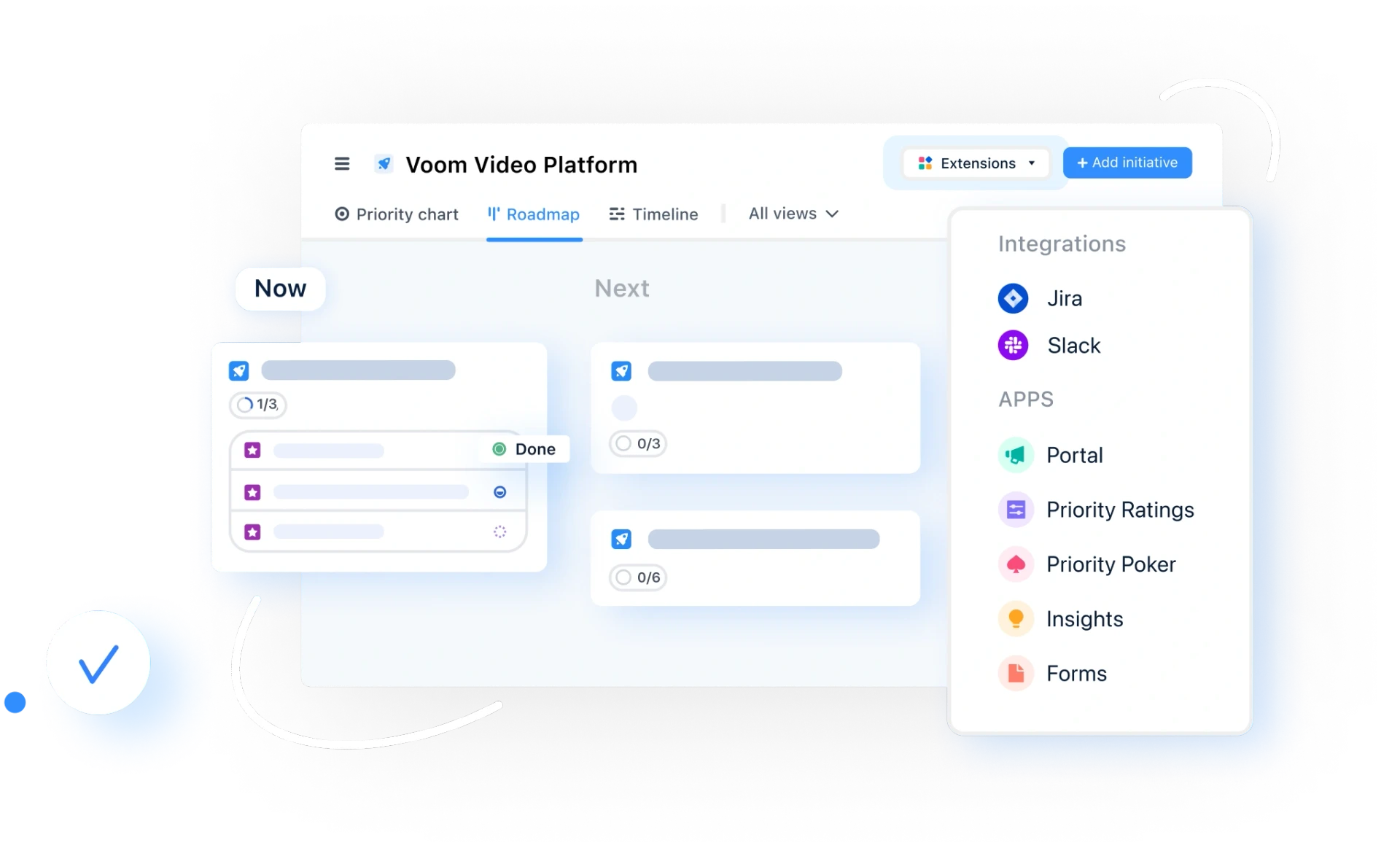Agility starts with people, not process: How to build agile, resilient product management teams

“Agile introduces a radically different way of collaborating and a more humane way of working.”
– Bryan Stallings, Chief Evangelist, Lucid
In the face of hybrid work, rising expectations towards product managers, and rapid technological shifts, agility is the foundation for truly resilient product teams. This isn’t just about process tweaks—it’s about product leaders creating environments where teams can experiment, learn, and adapt faster than ever before.
Bryan Stallings is already driving the shift from process- to people-driven leadership. Currently Chief Evangelist at Lucid, the world’s 12th most downloaded B2B app, with a 1,300-person workforce across five global locations, he brings decades of experience creating adaptive, people-centered organizations through lean change management and agile product development.
Today, he reflects on what the human path to agility and resilience really entails: creating psychological safety, celebrating wins, and uniting strategy, execution, and purpose—even across continents and time zones. For product teams navigating non-stop change, Bryan’s insights on human-centered agility are a blueprint for future-proofing performance, collaboration, and innovation.
(Psychological) safety first
For Bryan, the very first step of building agile teams is creating a safe space for them. “Before teams can be agile, they must be resilient. And resilience is impossible without psychological safety.” He emphasizes, “We need to frame this not as a nice-to-have but as a non-negotiable way to build agile and resilient teams, because I think it’s the foundation for collaboration and for innovation.”
This is especially important as teams grow increasingly scattered. “In today's world of remote and hybrid work, we need to level the playing field for everyone. Leaders should prevent remote workers from becoming second-class citizens,” which requires active effort.
The problem is that the symptoms of an unsafe environment are often silent. When confronted with a team member leaving the company, many leaders are left wondering, ‘Why did they leave the organization? They were happy, right?’ Bryan brings some warning signs to look out for and real-life strategies to address them:
Unequal team context
“When some people are in the office, while others are working remotely, and we're not facilitating our interactions or our collaboration so that everyone has the same experience and the same level of context.” As a result, the ones not present in the room might be left wondering, ‘I don't know what they just said. Was the laugh about me, or was it just an internal joke?’
Here’s how Bryan tackles this with his own team: “To make sure everyone gets the same experience, we go to separate small huddle rooms, even if we're in the office together, so that I'm on my laptop, as well as people in the office and the ones at home.”
Silent teams
“There’s that type of silence you experience in a meeting when only two or three people do the talking and other voices aren't being heard or invited in.”
To give everyone an equal chance to participate, leaders have to take on the facilitator role, which Bryan says should involve “tracking who hasn't spoken yet, explicitly inviting people in, asking ‘Who haven't we heard from yet?’”
Absence of conflict
“There might be a lack of healthy conflict in the team where things aren't being debated or discussed. Nobody ever disagrees. It's perhaps not safe to disagree.” A clear sign of this is “offline follow-ups, where team members wait until after the meeting to do their private back-channel messaging, to talk at lunch, or to go on a walk in order to talk about their real opinion.” For Bryan, what this really means is that “they don't trust the team to give their true opinion or their feedback.”
Team leaders can address this by saying, for example, ‘I notice we don't disagree often in our meetings. I want to make sure that we're not missing opportunities. What might be a better way to look at this?’ Bryan also suggests “using a visual-first technique any time that we ask for input. Do a couple of minutes of silent writing about how we might answer that question. Everybody writes a few notes, and then we'll discuss them. So then even the quietest voice gets heard.” Another strategy is to “go to breakout groups and have small group conversations where it feels safe.”

Beyond ceremonies: The always-on team room
Product leaders should acknowledge that Agile has shifted from mere ceremonies to “persistent digital team rooms.” Bryan describes them as “always-on spaces where a team’s work happens. Conversations, decisions, data, and all the reference material are living in a connected space.” This is an effective way to “improve the synchronous and asynchronous work and make things more fluid because we have that context persistence.”
These digital team rooms have three key benefits:
1. Context memory
Humans recall information better when the environment matches the context of the original learning experience. Bryan clearly explains how this applies in a work context: “If you've been in an experience where you collaborated with a team at a whiteboard, and you remember putting up a few stickies, and maybe you used that wall a couple of times this week, when you walk back the next morning, it doesn't seem like a blank wall to you. You remember contextually something about the board."
2. Creating a single source of truth
This allows teams to save time and eliminate duplicate work. “We call it the copy-paste problem: We had a meeting here, and now we took that information down, and we had to then present it into a different format and paste it into a PowerPoint or something else.”
When you have a persistent team space, “nothing becomes outdated, reality doesn't become obfuscated. Even when the manager asks you for an update or a summary, you know exactly where to point, and you know it’s up to date.” As a result, “this increases transparency and alignment. There are no hidden things that some team members don’t know about.”
3. Fostering unity in a personalized space
Bryan highlights the amount of personalization possible in these digital rooms and how that impacts the group feeling: “Teams love that sense of togetherness, family, of having ‘their thing.’ We used to decorate physical team rooms to make them look ours, and we lost that with COVID and remote work.” This should also be happening in digital spaces. “Once you call yourself a team, and you have a team space, there's a sense of ‘us versus them,’ in a good way. There's what we call a ‘third entity.’ There used to be a ‘you’ and a ‘me,’ and now we’ve become a team. We're a ‘we.’”
The Lucid Suite, for instance, provides good support for teams that want to create virtual rooms with an added layer of inclusion. “[Lucid] doesn’t just promote collaboration; it also accommodates everyone’s cognitive diversity. It’s a human-centric tool where everyone can contribute in the way that they process information best.” This matters because “not everybody thinks in a linear text or in bullet points, and it feels like those ways of thinking have dominated for decades.”
Celebration: The engine of resilience
High-performing agile teams rely on effective cross-functional collaboration and a safe environment that allows teams to fail and experiment. So how do you achieve that? Bryan calls it the four Cs of high-performing agile teams.
Communicate: “Communication improves transparency, ensures a shared vision, and positively impacts your bottom line.” Make information accessible to everyone and provide equal context to both in-office and remote teams.
Collaborate: “Collaboration is the magic that happens when people come together, interact, and create. Those moments of collaboration are like a pinball machine of effective productivity.”
Cultivate a growth mindset: “Growth doesn’t happen in the comfort zone,” Bryan stresses. Teams should be encouraged to try new things and perceive every failure as a learning experience.
Celebrate: “One benefit of positivity is that it keeps high-performing agile teams engaged, which can result in a boost to morale and camaraderie.”
Most product leaders fail at one of these Cs: celebrating. “We're wired as expert problem solvers, and we're always focused on what is the next problem to solve, and we move from one topic or one fire to the next. Too many of us view celebration as a distraction from the real work.” But acknowledging the wins truly matters. “It's a cultural aspect of communicating what success looks like.” Ignoring these opportunities can have a real impact. “When you fail to celebrate, you fail to recognize contributions, and you risk your team members feeling unseen, undervalued. This doesn’t support the resilience and trust that we're trying to create.”
“The easiest way to overcome that is to say, ‘I'd like to hear us brag on our colleagues today.’” And you don't have to wait for the next meeting or until the end of a project to celebrate the team’s wins. “You can do that iteratively; we can build a culture of recognition along the way.”
Bryan’s suggestion to implement that? “Put those compliments directly on your shared team space. Create a shout-out area. [Lucid’s] recruiting team did this, and when you visit their board, it is decorated with splashes of color. They pull in the photo of the person they're recognizing. They have stickies with different categories that they fill in. They post continuously, then review it together every month.”
From management to human-centered leadership
Human-centered leadership is about building long-lasting team resilience. To outline the three key ingredients for resilient teams, he refers to Dan Pink’s book “Drive”: “Autonomy, mastery, and purpose are described as the things that really motivate us.”
Autonomy: “That's really about trust, and it gives teams the clarity on what their purpose is, and then the autonomy to figure out how they're going to execute it. That becomes a boost to their resilience, because they own the outcome, and they can adapt to problems without having to wait for permission.”
Mastery: “Most individuals want to achieve mastery. That's what we pursue, and oftentimes we would prefer to work in a job where there's an opportunity to continue to develop that mastery and learn, rather than one where we feel stuck, even if the pay is better.” Creating a safe space to learn is central to this principle. “Resilience is built by that learning loop of trying something, failing, learning, and repeating. It’s the leaders’ job to make it safe to run that loop, creating an environment where mastery can be pursued.”
Purpose: “It's not just about bouncing back; it’s about bouncing back for a reason, because we're connected with our purpose, we're passionate about it, we have a larger goal that we're working on together as a team. That’s how we endure setbacks and persevere through friction.”
In order to embrace this philosophy, leaders have to let go of “the culture of the past, in which there’s one person in the room who's the biggest thinker, and everyone else is just taking orders.” Modern, human-centered leadership is about understanding that “we need everybody's brains and full selves connected to the purpose, so that we can achieve it together.”

Bryan highlights another important mindset shift that product leaders must undergo to future-proof their teams. Let’s picture a team as a “human system of people working together to accomplish a goal.” Senior leaders and executives are still busy “working in the system, alongside us, directing our moment-to-moment tasks. That's not the autonomy and mastery we’ve been talking about. You shouldn’t be working in the system, but on the system. You need to create a system that has great throughput and removes impediments.” A leader’s job is to “clear the runway so teams don’t collide with an impediment along the way.”
airfocus and Lucid: Enabling agility and resilience with a comprehensive platform
Tooling alone can’t make a team agile and resilient, but it can help. “The combination of airfocus and Lucid brings a modern, outcome-driven stack of tools. It provides this seamless engine to turn strategy into aligned execution,” explains Bryan.
On one hand, airfocus gives teams the ‘why’ and the ‘what’. “This is where leaders and product managers work on strategy and prioritize what needs to be built and why it needs to be built. It creates that high-level roadmap and that single source of truth for the strategic intent.”
Lucid provides the ‘how’ and the ‘when’. “This is the collaborative engine where teams execute on that strategy. They take the ‘what’ from airfocus, and they use Lucid to figure out the ‘how’.” This closely aligns with the autonomy component of modern leadership: “This fosters empowered and aligned autonomy. Teams will do their collaborative planning, product increment, sprints, and retrospectives on Lucid.”


Francisca Berger Cabral
Read also




Experience the new way of doing product management

Experience the new way of doing product management



